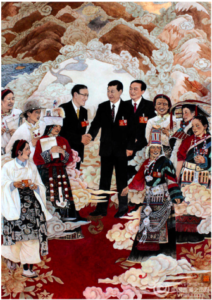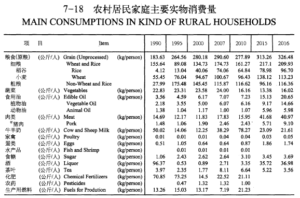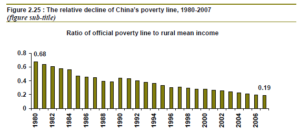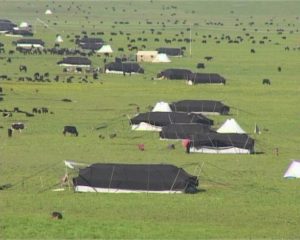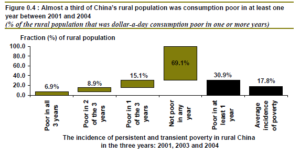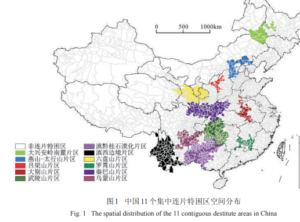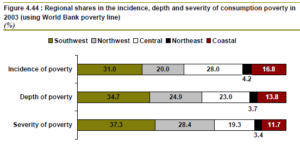TIBET AS A LAND OF INEVITABLE, INTRACTABLE, INCURABLE HUMAN MISERY
Blog one of four on POVERTY, IMMISERISATION and DESTITUTION in TIBET
Note: these blogs are adorned by classic Tibetan proverbs on poverty and wealth.[1]
“The CPC Central Committee has drawn up a plan for poverty elimination. By 2020 all impoverished people in rural areas will be guaranteed the basic needs of food and clothing as well as proper access to compulsory education, medical care and safe housing. All rural population below the current poverty line and all impoverished counties will shake off poverty, so that regional poverty as a whole, including severely impoverished areas, will be a thing of the past.“
-Xi Jinping 23 June 2017[2]
China’s commitment to fully eradicate all poverty, anywhere in China, by 2020, generates universal acclaim. Who could possibly be against poverty alleviation?
However, it is worth looking under the hood, to see exactly what China means by poverty alleviation. With much help from the experts, this blog finds many questions need to be asked. For starters: Is it true, as China’s central leaders say, that only 30 million of China’s 1300 million people in 2018 are still poor? How is poverty defined? Is it solely defined by cash income? What has China been doing to improve local economies in remote areas, to link them with the booming lowland China economy? What is a “contiguous destitute area”? Are some of the poor in poverty because their actual expenditure on health care for an ill family member is really high, even if, on official definitions, their income is above the poverty line? What sort of life can be lived at the poverty line?
Poverty alleviation triggers even more questions. How do central leaders know who is poor? Who decides? Is poverty alleviation funding available evenly across rural China? (we aren’t looking at urban poverty here). Does politics (local or national) intrude on who is classified as poor? Why does China insist many of the remaining poor are poor because they perversely choose to live in “inhospitable” districts (such as Tibet)? Does this mean the solution to this ecologically determined, territorialised, contiguous poverty concept is to relocate whole populations? Is the existing dibao minimum income program effective, fair, good at targeting those actually poor while not delivering benefits instead to those with better connections? What about corruption, falsified statistics, rigid targets and falsification of results?
A NOBLE GOAL
Now that China seems to be on the last leg of fully eradicating poverty, it is high on the agenda. The target is straightforward: in each of the three years, 2018, 2019 and 2020, 10 million people will be moved out of poverty, so by the end of 2020 there will be no more poor. All 30 million will be above the poverty line. China will have demonstrated to the world, to universal applause, its superior socialist system leaves no-one behind; all are included in the China miracle of the great rejuvenation. The anti-poverty effort is a reminder China is still a developing country, with an arduous struggle ahead to become rich. China is not shy about telling the world that lifting that last 30 million out of poverty is a major contribution to fulfilment of human rights, as economic rights are more important than civil or political rights.
Xi Jinping has declared poverty to be one of three “critical battles” that define the agenda of the years to 2020 (the other two are stability of the macro economy and the fight against pollution). Xi mentions the battle against poverty frequently: “Winning the battle against poverty: Seeing that poor people and poor areas will enter the moderately prosperous society together with the rest of the country is a solemn promise made by our Party. We should mobilize the energies of our whole Party, our whole country, and our whole society, and continue to implement targeted poverty reduction and alleviation measures. The central government makes overall plans, provincial-level governments take overall responsibility, and city and county governments ensure implementation; and we will strengthen the system for making heads of Party committees and governments at each level assume the overall responsibility for poverty alleviation. We will continue to advance poverty reduction drawing on the joint efforts of government, society, and the market. We will pay particular attention to helping people increase confidence in their own ability to lift themselves out of poverty and see that they can access the education they need to do so. We must ensure that by the year 2020, all rural residents living below the current poverty line have been lifted out of poverty, and poverty is eliminated in all poor counties and regions. Poverty alleviation should reach those who truly need it and deliver genuine outcomes.”[3]
Thus a lot hangs on success in this three-year campaign to eradicate poverty. It is useful even in other contexts, such as rebuffing American presidential accusations that China is a direct competitor with the US in high tech, stealing intellectual property, deserving of punitive tariffs. Part of China’s answer is that China, especially in its far west, is still poor, a developing country, with a huge job yet to be done, to develop backward areas, bring the poor into the national economy, and lift tens of millions out of poverty.
Tibet Autonomous Region Statistical Yearbook 2017
THE HIGH ALTITUDE SOLUTION
If one is too attached to illusory wealth
Worry, fear, anxiety-
These three will never cease
”China will further reduce the poor rural population by over 10 million, including 2.8 million people who are to be relocated from inhospitable areas, Premier Li Keqiang said Monday.”
Is the starting point of planning poverty alleviation the removal of people from areas deemed unredeemably poor because the entire area is too cold, too high, too lacking in oxygen, too remote, too degraded for the people ever to prosper? For their own sake, those people should be removed, relocated somewhere warmer, where there may be better cash income earning opportunities. These are key assumptions to be examined closely in this blog series.
Tibetans, of course, do not see the land of Tibet as Chinese see it, as harsh, bleak, unnaturally cold, dangerously hypoxic (low in oxygen) and irretrievably poverty-stricken. Nor does rugged terrain bother Tibetans, even in precipitous Kham and Amdo Ngawa, but the terrain enables Chinese scientists to add a lot to the list of what is wrong with Tibet: “including elevation, slope, relief amplitude, surface incision, variance coefficient in elevation, surface roughness, distance to roads, and distance to rivers.”[4] But Tibetan opinions are not sought and not heard.
The 2018 target of 10 million, with a further 10 million a year in both 2019 and 2020, means China can, by the end of 2020 declare poverty is no more, and thus proclaim itself as the world’s most exemplary developing country, and a major contributor to human rights, since China counts cash income as fulfilment of human rights. Nothing must get in the way of achieving those annual targets.
Of the 2.8 million human lives to be displaced in 2018, in the name of poverty alleviation, it is not clear how many are in Tibet. What is clear is that Tibet, especially the counties designated as poor, are officially classified as areas of “contiguous poverty”, where the natural factor endowment is seen, from a lowland Han Chinese agricultural perspective, as utterly deficient, defined by what is lacking. Put simply, China’s central planners assume no-one would choose to live in Tibet, if they had a choice. So, by relocating the poor (to where?) they are actually giving them a choice. Not only is this benevolent, it is a major contribution to human rights, and a reason why China can ignore Tibetan protests.
One of the new era 2018 reorganisation of government is the creation of a completely new agency, State International Development Cooperation Agency, 国家国际发展合作署, China’s own international development agency, which plans to export to the entire developing world China’s model of success. China has long had a modest program doing poverty alleviation projects in surrounding countries, in partnership with Asian Development Bank.
CONTIGUOUS DESTITUTE AREAS
The concept of territorialised contiguous poverty has a positive aspect. It can mean recognition that poverty has specific characteristics in specific areas, and so the solutions must be local, building on the strengths, capabilities, preferences, and aspirations of local communities. When looked at this way, the outcome can not only be empowering, and embraced by the local community, it can also achieve what China, in the past 60 years, has seldom attempted in Tibet, to build on the Tibetan comparative advantage in dairy and livestock production to improve quality and quantity of output, and access to the big, booming urban Chinese markets. Worldwide, this is the standard way of raising incomes and alleviating poverty, and it has been done in China, both by the state, and by international donors. But for 60 years, this kind of investment in local communities has been absent in Tibet. As lowland Chinas has boomed, Tibet has been left further behind.
If China sincerely wants Tibetans to improve their incomes, on their customary production landscapes, it is not too late to make up for six lost decades, as it is now much easier for Tibetan wool growers or dairy producers to directly connect with customers, as online access spreads quickly into rural areas. Tibetan producers have been disadvantaged by poor roads, distance from urban markets, absence of commodity flow chain logistics, as well as lack of investment. They have also been disadvantaged by the innumerable middlemen through whose hands product must pass en route to the customer, with the many middlemen capturing the profits. Now, with modern technologies promoted by the new Ministry of Agriculture and Rural Affairs, e-commerce simplifies the supply chain. China has taken to e-commerce very strongly, more so than in the US or Europe.
Strengthening Tibetan livestock and crop production has for decades been the obvious route to alleviating poverty, a route not taken. China’s poverty experts say: “Growth [of] China’s agricultural sector is particularly important for poverty alleviation, which is four times as effective in reducing poverty as growth in the secondary and tertiary industries.” [5]
In a positive way, the contiguous poverty concept can result in the comprehensive uplifting of an entire area, as Oxfam argued in 2013:
“Whereas in the past the model was simply aiming to produce enough food for everyone, now it strives to make communities richer. The approach has also changed – under the new policy set areas, not villages are targeted. This adjustment exchanges the previous, fragmented policy for more collaboration and cooperation, thereby creating a win-win situation. The new approach combines the daily life situations of different ethnic groups with government knowledge and experience accumulated over a long period of time in poverty reduction to form a local basis for continued development. Once food and clothing shortages have been overcome, the new program focuses on eliminating poverty and improving ethnic minority areas’ overall level of development in addition to increasing people’s incomes. When choosing regional development objectives, local governments in ethnic minority communities focus on solving regional poverty by focusing on areas that lag behind in terms of economic development. The contiguous poverty alleviation model, in contrast, considers both efficiency and equity. It stresses the need for a comprehensive uplifting of an area to the average regional level to fulfil the poverty reduction goals. Its main objective is to develop a strong pillar industry to accelerate the development of poverty- stricken regions with hopes of having a radiating effect on income, and as a way to improve the region’s capacity for self-development and better enabling an income increase for the impoverished community in the future. As such, this model caters to the needs of the ethnic minority. Development goals should be layered, dynamic, temporal and regional as well as capable of taking into account the specific characteristics of impoverished ethnic minority areas.”[6]
However, this approach requires listening to local communities, not mandatory displacement. Oxfam’s vision is of participatory poverty alleviation in China, not mass relocations: “Ethnic minority communities operate with unique social and economic models. The communities have their own ways of economic production and societal organization, as well as their own culture and customs. Because of this, poverty alleviation and development policy design cannot and should not be considered separately from the communities’ economic and social features. More precisely, poverty reduction policies targeting community development need to reflect the internal cultural characteristics of ethnic minorities. Policies should respect ethnic groups’ cultures and customs, in order to earn these groups’ respect and motivate them to participate. At the same time, ethnic minority communities have special needs relating to poverty reduction and development. Poverty alleviation and development should, therefore, address each community’s special needs while also responding to their respective cultural and economic settings. Ultimately, only policies that are also capable of catering to local needs can push for real change in those communities. The contiguous poverty alleviation and ethnic minority community development model itself reduces regional poverty. It has advanced poverty alleviation.”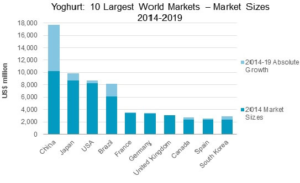
China has tried this constructive approach to contiguous poverty in ethnic minority areas, in several provinces, but almost never in Tibet.[7] The original concept of contiguous poverty held much promise. It was better able to identify who the poor are, the nature of their poverty, and come up with a menu of options all focused on working with local communities to overcome disadvantages and build on the strengths of communities which had made a living from marginal land for generations. The contiguous poverty concept was attractive, not only to China’s government but to international aid agencies, notably the World Bank, which brought its global experience to remote areas such as the Qinba Mountains, a declared “contiguous destitute area” 集中连片特困地区 jizhong lianpian tekun diqu of north-western China, in three provinces. Between 1997 and 2004 the Qinba Mountains Poverty Reduction Project spent $360 million, half of that from the World Bank, on many strategies for alleviating poverty. [8]
EFFECTIVE POVERTY WORK, FROM THE GROUND UP
The poor districts were defined by mapping together village-level data in clusters that added up to overlapping dots signifying poverty is contiguous. Successive Five-Year Plans over decades announced “pillar industries” that would arise in Tibet, to strengthen local economies. None actually happened, except for mass domestic Chinese tourism, which employs only Chinese speakers.
Some poor areas are quite large, yet carefully delineated. For example, in western Yunnan, the ethnic minority areas of the rugged mountain ranges and deep valleys of the three great parallel rivers (Yangtze/Dri Chu, Mekong/Za Chu and Salween/Gyalmo Ngulchu) are declared “contiguous destitute areas”, but not the Tibetan prefecture of northwest Yunnan, which is now branded Shangri-la, an idyllic land of happiness and tourism, and thus definitely not destitute.
However, as China relies ever more confidently on big data and high-tech remote monitoring of entire landscapes, the definition of “contiguous destitute areas” changed dramatically in 2011, no longer tethered to local data on specific villages laboriously collated to patch together the cartographic concept of contiguous poverty. Now new era China is more ambitious. This is literally big picture stuff.
Judge a man for himself
Not for his wealth
Judge a man for his goodness
Not for his eloquence
Now that China sees itself as being in the final stage of eradicating poverty altogether, the methods are increasingly authoritarian and the model is increasingly centralised, not in the hands of local communities. The current target of 10 million people a year requires 28 per cent of the poor to be relocated each year. This is the opposite of what Oxfam suggested. It is an authoritarian intensification, accompanied by the propaganda rhetoric of a mass campaign, and targets that must be met, not the slow work of local community development based on the opportunities identified by the locals. “Contiguous poverty” could have been liberating, now it has become a rationale for depopulating Tibet.
According to official data, at a time when the number of poor was declining everywhere in China, the rural poor in the Tibet Autonomous Region increased from 0.52 million in 2011 to 0.61 million in 2014.[9] Officially the total 2014 TAR population, including well-remunerated Han immigrants, was 3.176 million, so almost 20 per cent of TAR population is classified poor, or, to use official language, destitute.
This map displays the original concept of “contiguous destitute areas”, a bottom-up accretion of poor villages and counties in adjoining clusters, aggregated by central planners into the 11 officially “contiguous destitute areas” suitable for investment in community development, producer co-operatives, economic strengthening, linkage to markets, and other methods of alleviating poverty by enhancing the existing strengths of remote areas. Almost none of the Tibetan Plateau is included in this territorialisedl targeting of poverty in “contiguous destitute areas”. Only part of the Qinba Mountains destitute area (purple, in the map centre) is in the Tibetan prefecture of Gansu province. This is the map on which contiguous poverty alleviation work, including much investment by the World Bank, was based, until recently.
This map is from Comparative Analysis on Poverty Degree of China′s 11 Contiguous Destitute Areas: with View of Comprehensive Development Index by Ding Jian-jun, in 2014.[10]
After 2011, this map was supplanted by a much wider territorialisation of “contiguous destitution.” This map is now no longer in use by central planners, having been replaced by a new map that dramatically expands “contiguous destitute areas” to include the entire Tibetan Plateau. For the new map, see the next blog in this series on POVERTY, IMMISERISATION and DESTITUTION in TIBET
[1] Lhamo Pemba, Tibetan Proverbs, LTWA, 1996
[2] Xi Jinping, The Governance of China vol 2, Foreign Languages Press, Beijing, 2017, 92-3
[3] Xi Jinping, Secure a Decisive Victory in Building a Moderately Prosperous Society in All Respects and Strive for the Great Success of Socialism with Chinese Characteristics for a New Era Delivered at the 19th National Congress of the Communist Party of China October 18, 2017 http://www.xinhuanet.com/english/download/Xi_Jinpis blog series.ng’s_report_at_19th_CPC_National_Congress.pdf
[4] Yanguo Liu, Chengmin Huang et al, Assessment of Sustainable Livelihood and Geographic Detection of Settlement Sites in Ethnically Contiguous Poverty-Stricken Areas in the Aba Prefecture, China; ISPRS International J. Geo-Information, 2018, 7, 16, free download: http://www.mdpi.com/2220-9964/7/1/16
[5] Yansui Liu, Jilai Liu, Yang Zhou, Spatio-temporal patterns of rural poverty in China and targeted poverty alleviation strategies, Journal of Rural Studies 52 (2017) 66-75
[6] Poverty Reduction Model Research Series and Minority Community Development, Oxfam Hong Kong 2013, http://www.oxfam.org.hk/filemgr/2761/1-MinorityCommunityDevelopment.pdf 22
[7] Contiguous Poverty Alleviation and Ethnic Minority Community Development, by Deping Xiang, Ling CHENG, Hong TIAN, Gang HE, Fang LV, Wen SONG, Fengshao TIAN, Nationalities Publishing House
[8] Weiwei Chen , Danmeng Feng & Xiaoyuan Chu, Study of Poverty Alleviation Effects for Chinese Fourteen Contiguous Destitute Areas Based on Entropy Method, International Journal of Economics and Finance; Vol. 7, No. 4; 2015
[9] Yansui Liu, Jilai Liu, Yang Zhou, Spatio-temporal patterns of rural poverty in China and targeted poverty alleviation strategies, Journal of Rural Studies 52 (2017) 66-75, 68
[10]中国11个集中连片特困区贫困程度比较研究, 基于综合发展指数计算的视角, 地理科学Scientia Geographica Sinica, Vol.34 No.12 Dec., 2 0 1 4
